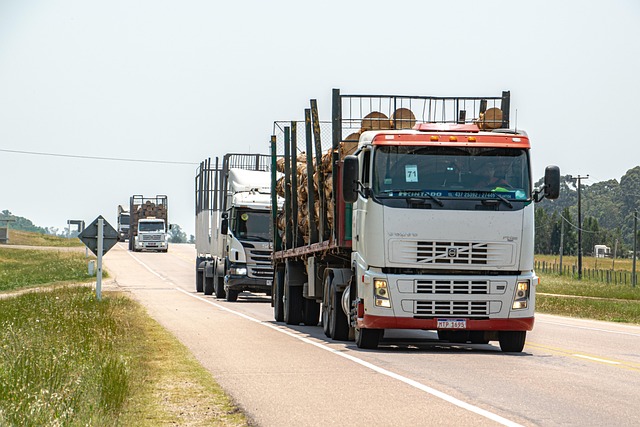Looking to register your car in California? This guide walks you through the process, ensuring a smooth experience. First, understand the state’s unique registration requirements and essential steps for VIN verification. Gather all necessary documents, perform a Vehicle Identification Number (VIN) check, and decide between online or in-person registration at a DMV office. Once approved, pay fees and secure your license plate. Streamline the process with these clear instructions, focusing on crucial aspects like vin verification.
- Understand California Car Registration Requirements
- Gather Necessary Documents for VIN Verification
- Perform Vehicle Identification Number (VIN) Check
- Complete Online Registration or Visit DMV Office
- Pay Registration Fees and Obtain License Plate
Understand California Car Registration Requirements

Before registering your car in California, it’s crucial to understand the state’s specific requirements. One key aspect is ensuring that your vehicle has undergone a valid Vehicle Identification Number (VIN) verification process. This involves checking the VIN accuracy and matching it with the vehicle’s make, model, and year. In California, this verification can be done through various methods, including using a mobile vin verifier or undergoing a mobile vin inspection to ensure all details align with state records.
Additionally, you’ll need to meet certain eligibility criteria for registration, such as having a valid title, proof of insurance, and paying the requisite registration fees. A mobile vin verification service can help streamline this process by providing on-site inspections, ensuring that your car’s registration is both accurate and efficient, thereby avoiding any potential delays or complications.
Gather Necessary Documents for VIN Verification

Before heading to the California Department of Motor Vehicles (DMV) to register your car, ensure you have all the necessary documents for a smooth vin verification process. This includes the vehicle’s vin inspection report, which can be obtained through a mobile vin verifier or by visiting a certified repair facility. Additionally, you’ll need proof of identity and residency, such as a driver’s license, state ID card, or valid passport, along with any relevant tax documents or payment for registration fees.
Gathering these documents in advance will significantly expedite the registration process. Remember to check the DMV’s website for specific requirements and guidelines, especially regarding acceptable forms of identification and proof of ownership. It’s always better to be prepared with all the necessary paperwork to avoid delays and ensure a hassle-free vin inspection.
Perform Vehicle Identification Number (VIN) Check

Before you register your car in California, performing a Vehicle Identification Number (VIN) check is a crucial step. This involves verifying the VIN of your vehicle to ensure it matches the records and specifications provided by the manufacturer. You can do this through several means, including online platforms or by visiting a local DMV office. A valid VIN inspection ensures that the car you’re registering is genuine and has not been reported as stolen or had its identity tampered with.
A mobile vin verification service can also be a convenient option for California residents. These services send a technician to your location, allowing for a quick and accurate check of your vehicle’s VIN. This approach is especially beneficial if you’ve recently purchased a used car or have a unique or classic vehicle that requires special attention during the registration process. By ensuring the accuracy of your VIN, you can streamline the registration process and avoid any potential issues down the road.
Complete Online Registration or Visit DMV Office

You have two options for registering your car in California: complete the process online or visit a DMV office in person. Both methods require gathering essential documents and providing accurate information, but using the state’s online system, called CalVIN (California Vehicle Information Network), is often more convenient and time-saving. If you choose to register at a DMV, be prepared for potential wait times as these offices can get busy.
When registering your vehicle, you’ll need to undergo a vin verification process to ensure the vehicle’s identity. This can be done through traditional methods by visiting a qualified mechanic or inspector or by utilizing mobile vin inspection services that offer convenience and flexibility right at your location. Some even provide online tools for initial checks, making the entire process smoother.
Pay Registration Fees and Obtain License Plate

After completing your vehicle’s registration application at the DMV or through the California Vehicle Registration Online Service, it’s time to pay the registration fees. These fees vary based on your vehicle type and model year. Make sure to have your payment method ready, such as a debit or credit card, before proceeding. Once the payment is processed, you’ll receive a temporary registration permit. This allows you to legally operate your vehicle while awaiting your official license plates.
Before receiving your physical license plates, a crucial step involves obtaining a valid inspection certificate through a mobile vin verifier or performing a mobile vin verification. This process ensures your vehicle meets safety and emission standards. With the rise of mobile vin inspection services, this step has become more convenient, allowing you to complete it without visiting a DMV location. After passing the inspection, your licensed plate will be issued and delivered to you, completing the registration process for your California vehicle.
Registering a car in California involves understanding specific requirements, gathering essential documents for VIN verification, completing an online registration or visiting a DMV office, and paying associated fees. The process ensures that vehicles on California roads meet safety standards and are legally registered. Always remember to perform a Vehicle Identification Number (VIN) check accurately to avoid any issues during the registration process.
